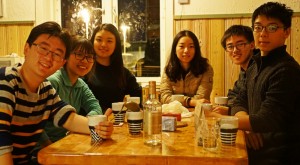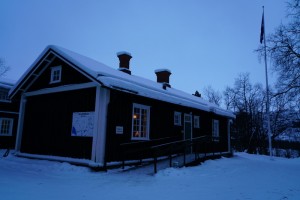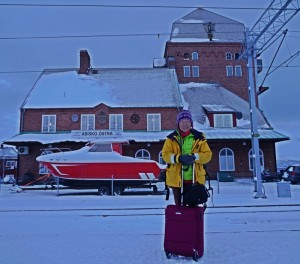Northern Sweden: Abisko and Kiruna
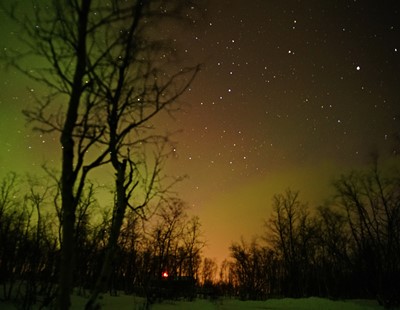 I have been to Stockholm, Gothenburg and Malmo for work a dozen times but have never gone beyond Uppsala. Abisko, about 200 km north of the Arctic Circle and an hour by train from Norway, is said to be a good spot for viewing aurora borealis (also known as Northern Lights). Hence, I continued my Arctic Circle journey from Narvik to Swedish Lapland.
I have been to Stockholm, Gothenburg and Malmo for work a dozen times but have never gone beyond Uppsala. Abisko, about 200 km north of the Arctic Circle and an hour by train from Norway, is said to be a good spot for viewing aurora borealis (also known as Northern Lights). Hence, I continued my Arctic Circle journey from Narvik to Swedish Lapland.
December 2 Wednesday: Narvik, Norway – Abisko Östra, Sweden
There are two daily trains from Narvik to Abisko (68º20’N14º40’E). I picked the later one at 12:40 pm and arrived at the Abisko Östra at 2:22 pm. The ticket only cost 66 SEK. The railway from Kiruna to Narvik passing through Abisko took three years and 5,000 workers to build and became operational in 1902. I had a scenic ride with great views of a white world of fjords, mountains, lakes and few picturesque cabins close to the train stations along the railway line.
Northern Sweden & Swedish Lapland: 6 nights in Abisko and 1 night in Kiruna
A week in Abisko
Abisko Östra is about 2 km from the Abisko National Park which covers an area of 77 km²in Swedish Lapland and next to the Torneträsk Lake. Abisko is a place for both summer outdoor activities and winter adventures. The famous 400km-longKing’s Trail (Kungsleden) between Abisko and Hemavan, is one of the best trails for ski and hiking.
The area around Abisko is scientifically proven to be an ideal viewing spot of Northern Lights due to a unique micro climate: the 69-km-long Torneträsk Lake helps create the “blue hole of Abisko”, a patch of sky that remains clear regardless of the surrounding patterns. A Sky Stationsituated on Mount Nuilja, 900m above sea level, is a spot for star and Northern Lights gazing. The UN has designated 2015 the “Year of Light”. Lonely Planet has named Top Ten places in the world to enjoy light phenomena and Abisko is on the top.
I do not ski but have found enough things to amuse myself. I had a quiet but pleasant and peaceful week in Abisko and my activities were often weather dependent.
Accommodation: There are only a few choices in Abisko in winter. One can stay at the Abisko Tourist Stationwhere a single room in the hotel costs over SEK1,900 a night (the hostel would not open till December 18) or in the village at Abisko Östra (about 2 km away). When looking for accommodation online, I could only find Abisko Guesthouse which offerred the cheapest rate at 795 SEK for a room without window, private facilites or breakfast. After arrival, I discovered Mountain Lodge nearby has single rooms with breakfast, toilet and bathroom for around 1,000 SEK and a hostel for SEK250 a bed a night.
Klax, owner of the Guesthouse and his staff (Mia and Frank) are nice. But I moved to the hostel on the fifth day as I did not like a small windowless room. I havemade the right move.
- First, I met a dozen sociable backpackers from Mauritius, Germany, Korea and Malaysia and young students from Mainland China. They have all come for the Northern Lights. I enjoy their company and enthusiasm.
- Second, a room with a view is important for monitoring the ever changing weather conditions. As all the single rooms had been taken, I stayed in a dorm with six beds.But only two beds were occupied. The room is spacious with high ceiling, a large window and a working table. It is a joy to sit at the table while watching snow fall and at timesstorm outside. In addition, I saved 545 SEK a night!
- Third, the kitchen cum living room close to my room provides a focal point for social interaction and monitoring the weather. The two big windows in the kitchen look out at the north and west direction. As soon as someone noticed the snow had stopped, news spread like wide fire and everyone would rush out even for 10-20 minutes. As a result, I was able to watch Northern Lights twice in the early hours on December 8 when the snow suddenly stopped and the sky cleared up.
Food: I had to cook for myself: I had salmon, crab meat, prawn, cheese, chicken thigh, rice noodles and yogurt. While in the Guesthouse, Mia, Shi and Frank, all from Taiwan, had been cooking and invited me to eat with them on three occasions. I appreciate their kindness and delicious food.
Activities: I have come here for a winter experienceand the Northern lights. I witnessed on the second day the first heavy snow fall in Abisko this year. Then it snowed everyday afterward including a snow storm with strong gale on December 7. Indeed I had a cold white week with Christmas feel!
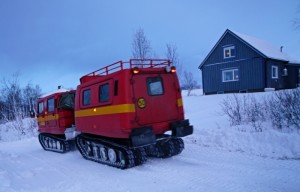 |
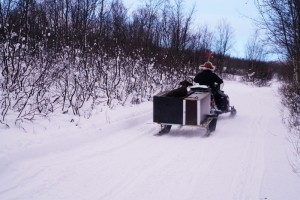 |
As it is cold and gets dark early, one can just stay in a warm bed or living room by the fire the whole day. But I am determined to carry on doing something outdoor during the few hours with daylight. Despite the snow, I enjoyed walkingin the National Park, around the village and the lake and soon worked out a simple routine with 6to 10 hours sleeping (depending on my body needs) and 2 to 5 hours‘ walking.
In Abisko, one can see Northern Lights created by a combination of solar activities, the atmosphere and magnetic fields, almost every night when the sky is clear. The question is whether the weather is fine and whether it is a fantastic display which is dependent on a combination of factors. Hence I would spend 2 to 4 hours outdoor looking for Northern Lights between 6 pm and 7 am (dependent on weather).
Day 1 (December 2). By the time I settled down in the Guesthouse, it was dark. The sky was clear and Klax urged me to go to the lake where I might see Northern Lights. I followed his advice and did find a narrow band of green Northern Lights above the low-lying mountains on the other side of the lake. When it became cloudy, I returned to the Guesthouse after 8:30pm.
Day 2 (December 3). The sky was grey in the morning. I left the Guesthouse around 10:30 am and walked to the Abisko National Park for the first time. Though it began to snow, I continued to follow the river and reached the meditation pointwhich affords a good view of the river and mountains afar. I also found the lit-up walking path to Abisko Tourist Station and the Sky Station. The chair lift costs 745 SEK for a return trip between 9 pm and 1 am.
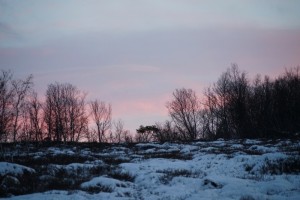 |
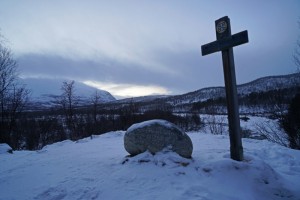 |
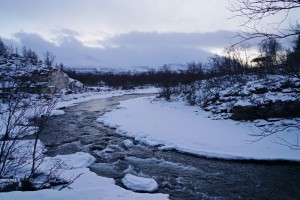 |
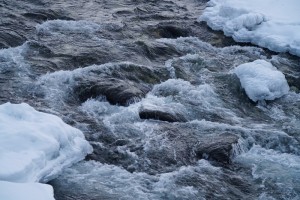 |
It started to snow again on my way back to the Guesthouse. I arrived after 3:30pm and Mia and Shi were relieved to see me back. It snowed non-stop for the rest of the day: it was the first heavy snow fall this winter.It’s time for a good sleep as there’s no chance for Northern Lights.
Day 3 (December 4). The snow had stopped and the sky was clear. I spent the morning walking along the lake with knee-deep fresh snow. I also took a look at the hostel and Mountain Lodge and decided to stay in the hostel from December 6 to 8.
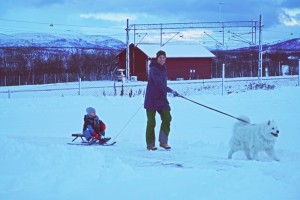 |
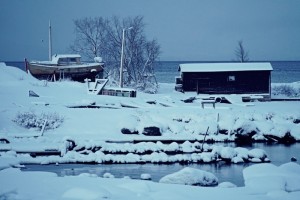 |
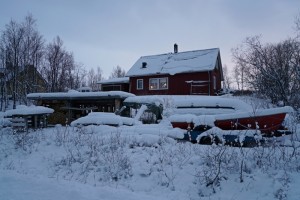 |
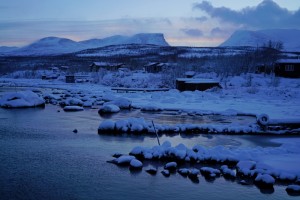 |
After an early dinner, I went to the lake and discovered a glittering sky covered with stars. I returned to the Guesthouse to pack my tripod and camera and walked 3 km to the Sky Station. I had the first good display of Northern Lights of this trip though the colours were mainly green.
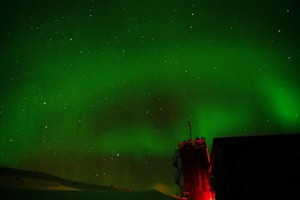 |
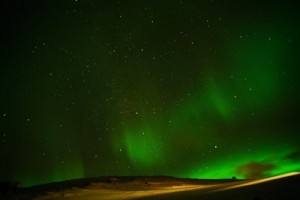 |
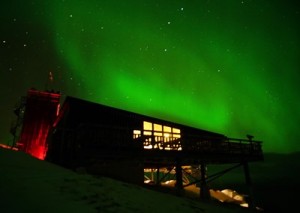 |
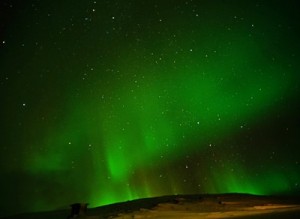 |
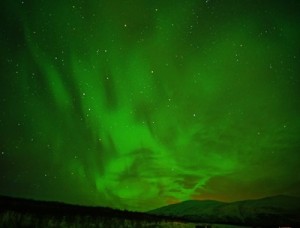 |
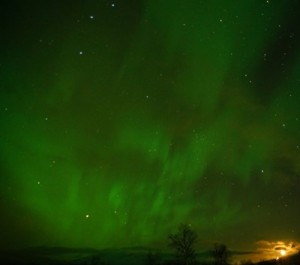 |
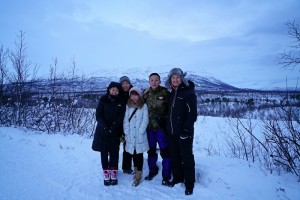 The weather was changing fast. It was so windy that my tripod fell. Luckily I caught my camera just in time. I was cold and had to take a hot chocolate in the cafe. Suddenly I heard someone talking in Cantonese and met Jackie, To, Kevin, Candie and Bithia from Hong Kong. We were the last group to leave the station around 12:30am. They stayed at Mountain Lodge and kindly gave me a lift thus saving me an hour’s walk. We went to helipad close to Mountain Lodge to watch Northern Lights for another half an hour. I did not return to the Guesthouse till 1:30am.
The weather was changing fast. It was so windy that my tripod fell. Luckily I caught my camera just in time. I was cold and had to take a hot chocolate in the cafe. Suddenly I heard someone talking in Cantonese and met Jackie, To, Kevin, Candie and Bithia from Hong Kong. We were the last group to leave the station around 12:30am. They stayed at Mountain Lodge and kindly gave me a lift thus saving me an hour’s walk. We went to helipad close to Mountain Lodge to watch Northern Lights for another half an hour. I did not return to the Guesthouse till 1:30am.
Day 4 (December 5). I spent the morning exploring the village lying on the other side of the railway line. The snow was deep and it was not easy to go too far. After finding a good spot for photos, I returned to the Guesthouse after 1 pm.
Tonight, the sky was clear and I could see plenty of stars. I therefore returned to the spot I had found earlier and took photos for two hours. My Hong Kong friends also made their way to the same spot later. What a coincidence!
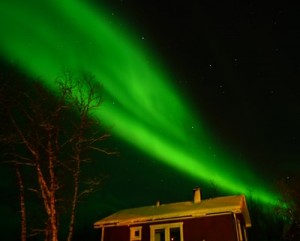 |
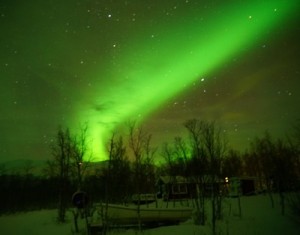 |
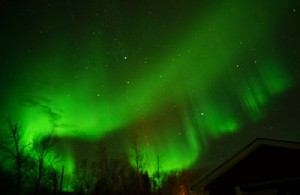 |
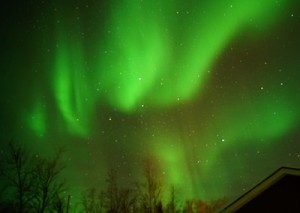 |
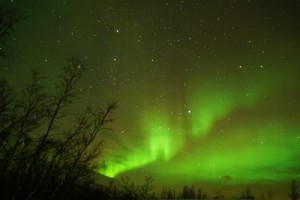 |
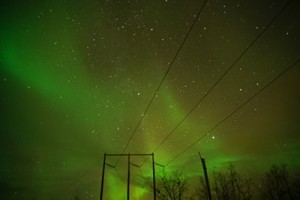 |
The lights were awesome and better than the night before. I saw some nice formations including ribbon, curtain, columns and arches. But I had not been able to take some decent photos. I left before midnight as it became cloudy. I was satisfied and had a good sleep.
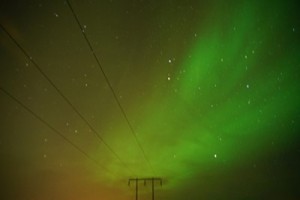 |
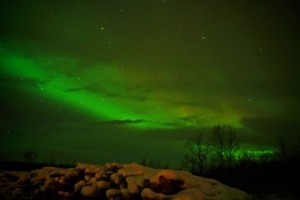 |
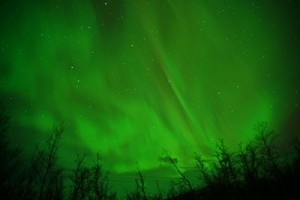 |
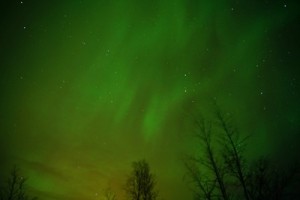 |
Day 5 (December 6). I got up after 7 am and was excited to find beautiful sun rays for the first time since arrival. I set off for a walk in the vicinity till 11:30 am. Then I moved to hostel located on the other side of the railway line.
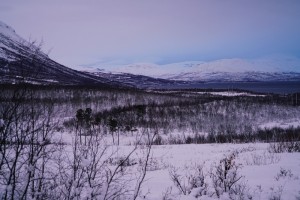 |
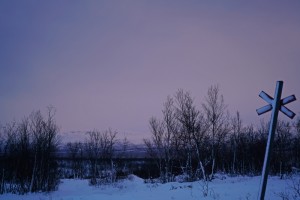 |
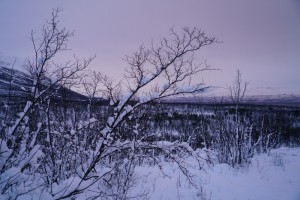 |
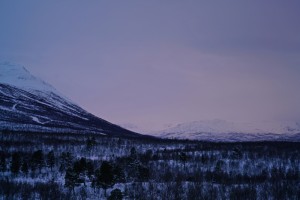 |
In the evening, I took a sledge tour organised by Klax with 11 other participants from 7 to 10 pm. We saw some Northern Lights at the beginning of the trip. I sat in a wooden sledge pulled by a snowmobile together with three Hong Kong Chinese. It is the most uncomfortable ride I ever had. First, I do not like the noise of the snowmobile especially in a beautiful dark Arctic night. Second, I cannot stand the smell of diesel. Third, the seat is uncomfortable and there was not much room to move. Finally, I felt cold.
I had a sleddog trip in Yellowknife which is enjoyable. I also enjoy driving a snowmobile through the forest and in Slate Lake in Canada. But to sit in a sledge pulled by a snowmobile is a totally different experience.
The sky was very cloudy at the end of the trip. As the forecast suggested an active level of Northern Lights might appear after 2 am, I set my alarm before going to bed. When I got up at 2 am, the Chinese students came in to say the sky was too cloudy and it was not worth going out. Hence I returned to bed happily.
Day 6 (December 7). I woke up to find a sky covered with dark clouds. As my room was too comfortable, I could easily spend my last day in Abisko working on my travel notes and photos. After having my breakfast, I met Sera and KY returning from their sleddog tour (two hours for SEK1200). The sky suddenly brightened up with enchanting pink clouds. Sera and KY had not been to the Abisko National Park yet. Hence we decided to walk to the canyon which is next to the Abisko Tourist Station.
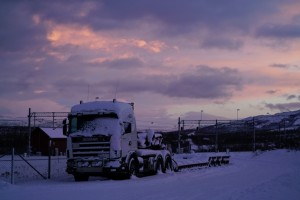 |
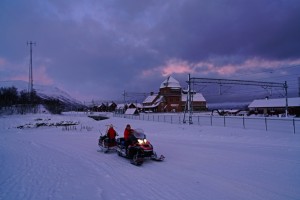 |
Half way to the park, it snowed heavily and we walked against the wind. My face was cold and I could not see as my glasses were covered with snow! Finally it stopped and we had an enjoyable walk around the canyon and to the view point looking at the lake. Despite poor visibility, I had an atmospheric walk: at times I fell and they had to pull me out of the snow!
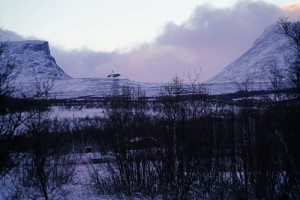 |
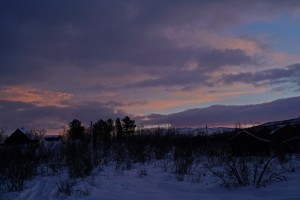 |
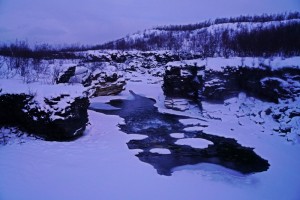 |
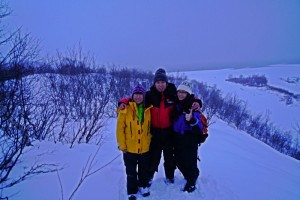 |
As the aurora level was estimated to be at kp5 level (G1) around midnight, I was keen to go to the Sky Station one more time before leaving Abisko. Unfortunately, owing to the strong wind, I was told at the Abisko Tourist Station that the station would be closed in the evening. What a pity!
It snowed heavily on our way back to the hostel. Luckily, the wind was behind us and we walked with ease this time. As soon as we got back to the hostel, the snow came down in full force with strong wind blowing the whole evening. I slept for a couple of hours in order to prepare to stay outside if the weather condition improved.
Day 7 (December 8). Soon after midnight when I was chatting with Sera and KY in the kitchen, we looked out of the window and found the snow had stopped. Next moment, someone yielded “Northern Lights”. We put on our clothes and rushed out. Some headed to the lake. Sera and KY just walked to a dark corner next to the Mountain Lodge. The snow was above my knee and I walked with difficulties. I had no time to set up the tripod and my camera properly and was too busy to look at the lights to take photos. Then it started to snow again. We then hurried back to the warm kitchen of the hostel.
I went to sleep while KY and Sera were watching the weather. At 4 am, KY knocked on my door to tell me that snow had stopped. Sera was exhausted and had gone to bed. So I took KY to my flavourite spot where we stayed and watched Northern Lights with deep orange, green, purple and yellow colours for two hours.
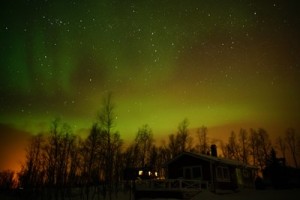 |
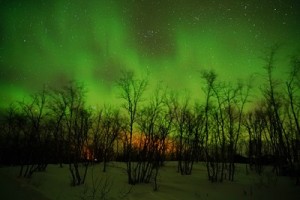 |
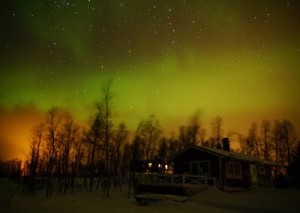 |
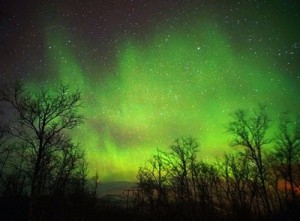 |
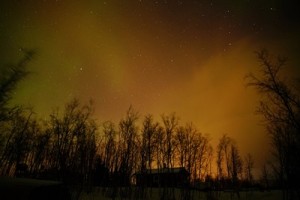 |
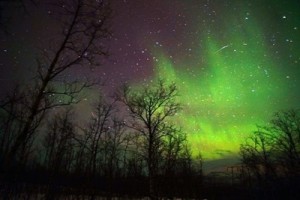 |
It was cold. As the lights became weaker, we decided to leave just before 7am. When I got back to the hostel, I went straight to bed and did not get up till 10 am. Time to pack up. Sera, KY and I took the 12:31 pm train: they were heading to Finland while I got off at Kiruna.
December 8 – 9: 24 hours in Kiruna
Kiruna, the northernmost town in Sweden, was founded in 1900 when the Swedish government decided to extract high quality iron ore in the area. Its founder was Johan Olof Hjalmar Lundbohm (1855-1926), a geologist and chemist and the first manager of LKAB in Kiruna. A railway line was built connecting it to the harbour in Luleå in the east and Narvik, Norway in the west. The city quickly became a major centre of iron ore extraction and mining industry. During WWII, large quantities of iron were transported from Kiruna by rail to the east coast and further down to be sold to Germany. Today, it has a population of about 20,000 and is the centre for Sweden’s high tech mining industry and the Esrange Space Center.
December 8 Tuesday: Abisko – Kiruna
I left Abisko Ostra at 12:31 pm and arrived in Kiruna at 1:34 pm (61 SEK). A free shuttle is available between the station and the city centre 2 km away. My original action plan was to spend a night at the ICEHOTEL and visit the LKAB mine. Unfortunately the ICEHOTEL would not be open till December 12 and there was no mine tour till Saturday December 12.
I took a room at the City Hotel close to the bus station for 575 SEK and had a spacious room with 3 beds, a kitchen and a writing desk in front of a large window. I walked around the city centre which is small and compact. Then I walked toSTF Point North Hostel at a foothill which is said to be a good spot for Northern Lights viewing. People in Kiruna saw Northern Lights the night before and I hoped to see it for the last time in Lapland before going south.
I knew nothing about Kiruna and was impressed to learn about its history and transformation. As the mine has been minded for over a century, it is now reaching more than 1,000 m deep and expanding sideways. The city is therefore subsiding slowly affecting some 5000 homes/office and 700,000 m². The local government has involved the people in planning for the new town which will be completed within five years. I looked at the model on display at the visitor centre with amazement.
I was so tired that I went to bed at 7 pm. Awaken by exciting voices from the corridor, I jumped out of bed thinking Northern Lights might have appeared. It was around 10 pm when I slipped out of the hotel looking up at the sky. There was no sign of Northern Lights: the town was dead quiet like a ghost town. I could not get back to sleep. So I worked on my Northern Lights photos till 3 pm. I was amazed to find a pinkish sky. What is it? Reflections from the city lights? I do not know.
December 9 Wednesday: Kiruna – overnight train to Uppsala
I had to check out before 10 am. At breakfast, I met four Chinese students on an exchange programme who had joined a 6-day bus tour from Stockholm to Abisko. I told them about my Northern Lights watching experience in Abisko and wished them luck. Before leaving Kiruna, I spent four hours walking around the town. First I visited Kiruna Church, one of the largest timber buildings in Sweden. Built between 1909 and 1912, it takes the shape of a Lapland house.
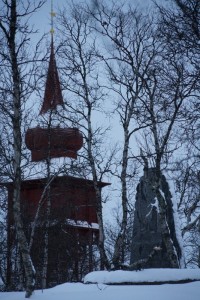 |
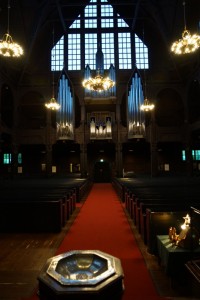 |
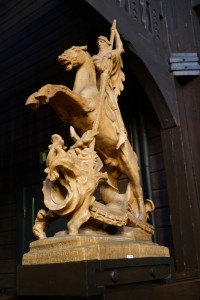 |
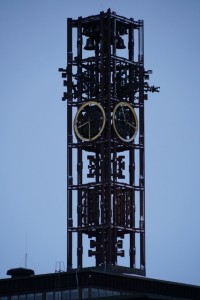 |
I enjoyed strolling in the Hjalmar Lundbohm Park built in 1895 and saw the first cabin built in 1890 and the house of Hjalmar Lundbohm, the founder of Kiruna and driving force behind the great mining project between 1898 and 1920 while working in the town. The park provides a transit zone between the mine and the city.
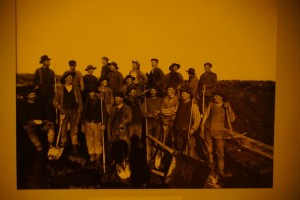 |
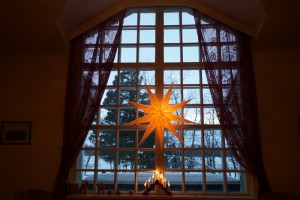 |
I spent a long time in his house looking at every room and photos taken by Bosh Mesch in early 1900s in Kiruna. Many of Lundbohm’s friends from the art world had come to Kiruna where Lundbohm arranged exhibitions and concerts for them. He attached great importance to education for children and adult and was interested in Sami people and their culture too and tried to help them keep their traditional life style.
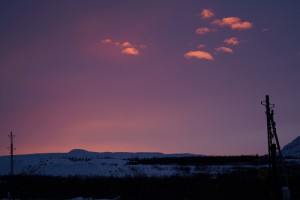 |
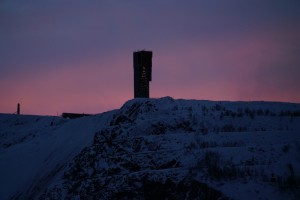 |
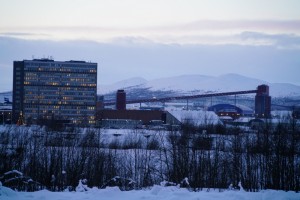 |
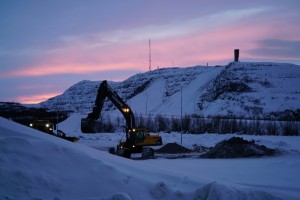 |
As I would be spending 16 hours on the train, I preferred to have a good lunch. So I had a buffet lunch at the hotel for 95 SEK before boarding the train at 3:48 pm. But after having two bowls of delicious soup, I was already full. The receptionist kindly let me pack the four meat balls on my plate (which lasted for three days!). I had a couchette for 513 SEK. Swedish trains are clean, quiet and comfortable. Tonight I had two clean bed sheets and a warm blanket. Everything was fine but I could not sleep till 4 am!


